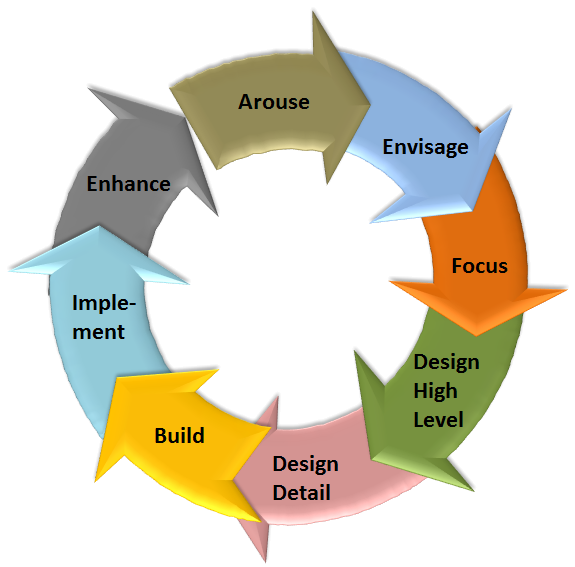Description
Structured method for assessing the degree to which an organisation is ready to change. The process draws on the perceptions of employees regarding how effectively the organisation has managed change in the past, and generates practical insights into how the organisation should manage change in the future. To succeed, they also must have an intimate understanding of the human side of change management by aligning the company’s culture, values, people, and behaviors to encourage the desired results. These insights are then integrated into a strategy for the involvement of employees during the BPI initiative, which will ensure that there is broad employee commitment both to the content of the change and the way it will be implemented.
When to Use
The Change History Diagnosis can be used in two main ways.
Approach
The use of a Change History Diagnosis needs to be carefully framed in the context of the overall BPI initiative Supplement the diagnostic with other data-collection processes such as interviews, and an analysis of reports and surveys relating to change initiatives conducted within the organisation over the previous two to five years. Once this context is clearly established, there are typical steps for using a Change History Diagnosis.
Ensure that the organisation is comfortable about the method of diagnostic. If they have used a diagnostic in the past that has worked well, it may be worthwhile using it again. It is best to check, however, if employees were comfortable with the process and whether the diagnostic has low credibility, because it was either poorly conducted in the past or there was no follow up.
Introduce the project team and the project sponsors to the diagnostic method , explaining its conceptual underpinning and language, and how it will assist the overall change initiative.
Select a representative sample of employees for surveying purposes.
Conduct the survey using focus groups.
Develop a report on the findings.
Feedback the results to relevant sponsors.
Ensure that employees who participated in the focus groups are provided with a clearly written summary of the results of the diagnostic, and the opportunity to respond to any of the subsequent findings.
Guidelines
Problems/Solutions
Some people may be resistant to the diagnostic method , and may dismiss it as an impractical questionnaire. This is often demonstrated by lengthy debate about its validity. These people can sometimes be hard to convince, and time spent trying to do so can be wasted. Thus, encourage participants to complete the diagnostic first, and then facilitate discussion about the issues that emerged from completing it afterwards. In most cases, people become supportive of the diagnostic. This is because it allows them to talk about issues such as management support, adequate resources, training and communication, which they may feel management has not handled well in the past.
Tactics/Helpful Hints
Have the leadership team and the internal change agents complete the diagnosis first. In most cases, they identify many of the same issues as are later identified by employees. This often leads to useful discussion about their past disappointments with how change has been managed, and sensitises them to the often deep-seated concerns that employees have about such a major change as BPI.
Some organisations become very attracted to the diagnostics and want to conduct large-scale surveys using them. These can be costly, slow to generate results and logistically complex. In addition, such surveys lack the interactive qualities of the approach outlined above. If the organisation is committed about going ahead with such an approach, ensure that there are mechanisms in place to manage communications, to manage the project within tight time and budget parameters, and to keep key opinion leaders on side.
Make all responses confidential, if necessary, and establish a ground rule about confidentiality, whenever there is an expectation that people talk frankly about the findings of the diagnosis.
A Framework for Understanding an Organization's Success
Compelling case - “Why Should we Change?”
Establishing the reasons for change
Identifying the cost/benefit
Articulating the articulating the argument persuasively
Communicating it to all
Vision - “What will we change to?”
Creating the overall vision of the enterprise
Identifying the immediate objectives and goals
Relating the immediate project to the overall vision
Maintaining clarity
Values - “Which behaviours do we value?”
Strategy - “How do we realise our vision?”
Identifying the enterprise-wide strategy
Ensuring that the chosen strategy is correct, appropriate and sustainable
Project goals and how they relate to that strategy
Implementation plans
Benchmarking
Information - “How well are we doing?”
Communication - “Who needs to know what?”
Leadership - “Who is keeping us on track?”
Establishing ‘followership’
Effective leadership styles
Modelling new behaviours
Taking risks, demonstrating courage
Resources - “What do we need to get there, and how do we get it?”
Capability - “Do we have the right mix of abilities?”
Change management skills
Acquiring and instilling the necessary skills
Overcoming organisational barriers
Developing maximum potential
Motivation - “How can we get all our people to work with us?”
 Description
Description
